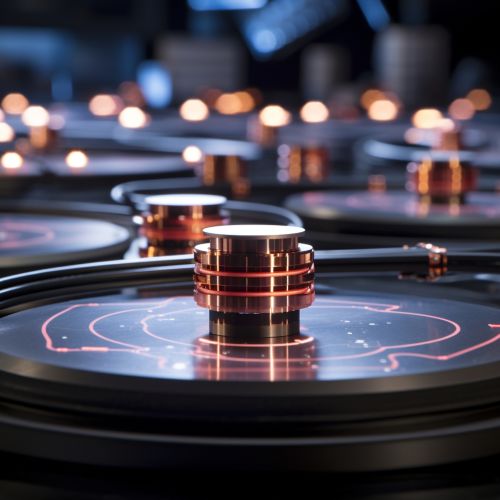Josephson effect
Introduction
The Josephson effect is a quantum mechanical phenomenon that involves the flow of supercurrent — a current that flows indefinitely long without any voltage applied — across a device known as a Josephson junction. This effect was predicted in 1962 by British physicist Brian David Josephson, who was a postgraduate student at the time.


Theoretical Background
The Josephson effect is a direct consequence of quantum mechanics and more specifically, the phenomenon of quantum tunneling. Quantum tunneling allows particles to pass through a barrier that would be insurmountable according to classical physics. In the case of the Josephson effect, pairs of electrons (known as Cooper pairs) are able to tunnel through the insulating barrier between two superconductors.
The mathematical description of the Josephson effect is derived from the principles of quantum mechanics. The current that flows across a Josephson junction can be described by the Josephson relations, which are two equations that relate the current and voltage across the junction to the phase difference of the superconducting wave functions on either side of the junction.
Josephson Junction
A Josephson junction consists of two superconducting materials separated by a very thin insulating barrier. This barrier, often only a few nanometers thick, is thin enough to allow Cooper pairs to tunnel through via the Josephson effect. The properties of a Josephson junction can be manipulated by changing the thickness of the barrier, the types of superconducting materials used, and the temperature at which the junction operates.
Josephson Effect Applications
The Josephson effect has found wide-ranging applications in various fields of science and technology.
In quantum computing, Josephson junctions are used to create superconducting qubits, the fundamental units of information in a quantum computer. These qubits can exist in a superposition of states, allowing quantum computers to perform complex calculations at speeds far exceeding those of classical computers.
In physics, the Josephson effect is used to define the standard unit of voltage. The Josephson constant, the ratio of the frequency of the radiation to the potential difference across the junction, is used as a standard for voltage in the International System of Units (SI).
In electronics, Josephson junctions are used in superconducting devices such as SQUIDs (Superconducting Quantum Interference Devices), which are extremely sensitive magnetometers used to measure very small magnetic fields.
